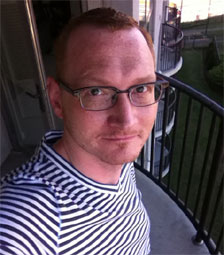Graduate Student, English Dept., UC Riverside

Links: Homepage | UCR English Department
Research Sample: excerpt from “Borders and Bodies in City of Heroes: (Re)imagining American Identity Post 9/11” (forthcoming)
As a test case, City of Heroes both affirms and ruptures the utopian potential that Stone sees in virtual engineering. The game affirms Stone’s argument by offering an escape from the traditional male/female binary by offering a third body type, which the game terms huge. From the point of view of comic-book culture, such an enormous body type is necessary to recreate many well-known comic-book characters (e.g. Marvel’s Beast, Juggernaut). However, the theoretical value of this third type becomes complicated. As Calvert observes, “Although there is more flexibility about selecting one’s gender on the Internet, gender still remains the most constrained choice that people make about their online identity” (63). In City of Heroes, the character creation screen asks the player to “Choose a Body Type”; yet, the body types themselves are labeled in gendered terms: female, male, huge. In this conflation of gender and body type, the huge body, which clearly looks male and offers customization features similar to those of the male avatar, is simultaneously coded as both male and not male. Within this three-gender system, the huge body type suggests a monstrous body, creating a space of otherness within the game.
From a Western European cultural perspective, the concept of the monstrous has a long history of interpretation as a transgressive or queer masculinity dating back to the seventeenth century. In Sodomy and Intepretation, Gregory Bredbeck reviews the rhetoric employed in Mervin Touchet’s 1631 sodomy trial to argue that sodomy and homoeroticism were “contained within a mythology of the unnatural, the alien, and the demonic…attributing sodomy to foreign languages and monstrous men” (5-6). More recently, Judith Halberstam has argued that “the emergence of the monster within Gothic fiction marks a peculiarly modern emphasis upon the horror of particular kinds of bodies” (3). Although City of Heroes may not seem like a Gothic narrative, the game promotes the fear of invasion and the desire to protect, tactics that Halberstam specifically notes in her definition of Gothic as “the rhetorical style and narrative structure designed to produce fear and desire within the reader” (2).
Contributions to Transliteracies Project:
Accessing and Browsing Information and Communication (Research Report)
MediaBASE (Research Report)
